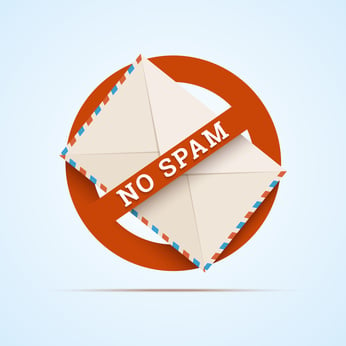8 Ways To Build Compelling Email Subject Lines for Inbound Marketers
Building, Clear, Attention-Grabbing email Subject lines. The Radicati Group reported that 1.9 billion non-spam emails are sent everyday. To break...
3 min read
Mark Parent
February 24, 2014 8:57:00 AM EST


According to our Science of Email research, personalized emails improve clickthrough rates by 14%. This is an easy win! Simply include a person’s first name in your email greeting to net a double-digit boost in email clickthroughs.
Despite the impressive benefits of email personalization, a surprising 68% of marketers aren’t utilizing personalized content in their email marketing – despite the fact that a third of marketers believe personalized campaigns are highly effective.
As a result, developing personalized emails is a great way to gain a competitive advantage in your email marketing. With 72% of B2B firms reporting that a top priority for this year is to deliver highly relevant content, this is the time to employ personalization tactics and get ahead of your competition.
Think about how to leverage personalization for your lead nurturing or sales strategies. Beyond simply adding a first name to your email greetings, develop targeted content for each list segment. Delivering personalized email messages or specific offers based on your audience's behaviors, interests, or buying stage is a terrific way to set your content apart.
Just like a five-star restaurant would remember and cater to their top customers’ preferences – for example, whether you like red or white wine – you can use smart lists and dynamic email templates to deliver individualized content based on your contacts’ form responses or past purchase history.
Your database most likely includes both customers and prospects – all of whom are at varying stages of their buying cycles. When designing a five-star email experience, pay attention to how you segment your list and align your email strategies to capitalize on your list’s needs.
Segmentation is extremely effective in boosting email performance metrics. We found that 39% of email marketers who practice list segmentation see better open rates, while 28% have reduced opt-out and unsubscribe rates. On the other hand, companies that sent emails to a single list had a lower average email click-through rate (7.3%) than those that segmented their overall email database into two to six lists (8.3%).
As you can imagine, in reaction to these results, 84% of B2B marketers use some kind of segment targeting in their email campaigns. If you are looking to start segmenting your list, consider the following to begin your list parsing:
Personal data such as geography, age, gender, job function, industry, seniority, etc. can all offer insight on what kind of email content will be most interesting to your target audience.
Personas: The best marketing strategies are built around detailed buyer personas that help inform their content development. Once you have defined your personas, use these targeted personas to design email content that appeals to your personas’ distinct challenges and concerns.
Any past purchase or browsing history can also help focus email sends to specific interests. Purchase history can be used to target thank you and cross-sell emails. In your secondary CTAs, recommend additional services or complementary products your audience might enjoy based on past purchases.
Even if you don’t have explicit personas, segment your list based on your customers’ purchase cycles. Set up separate lead nurturing tracks for those at the top of your sales funnel, in the middle of your sales funnel, and at the bottom of the sales funnel. By providing information linked to questions your prospects face along their decision-making process, your content will better push your leads down the funnel, and ultimately close sales.
Look at your email analytics. Is there a specific segment that always downloads a certain kind of content? What can you infer about these content trends to improve your email list performance?
At SugarBush, we found that some of our leads and contacts are far more interested in certain content topics than others. One of our segments frequently downloads information on sales and marketing alignment, while another is far more interested in Pinterest marketing.
We segment our list based on the topics our contacts have shown interest in and make sure to offer additional complimentary offers based on this interest and engagement. Look at your lists to see if similar trends emerge, and incorporate these insights into your email strategy.
As its popularity grows, segmentation is becoming more efficient. New marketing automation, email workflows, and triggered smart lists make collecting and segmenting your email database more streamlined. Use these ideas above to begin cutting up your database.
You will learn along the way, and you can improve your practices as you watch what works. When thinking about your segmentation, consider how people will open your messages. To be worthy of five-star status, your email needs to be readable on all devices. First, check to see that your email messages are mobile-optimized.
As iPad and SmartPhone technology evolve, more people are bypassing their laptops reading your emails on a mobile device - email open rates on smartphones and tablets have increased 80% over the last six months.
Another viewing best practice is to create a text-only version of all your email messages for those on your mailing list with less advanced technology. This additional step ensures that your good content will be delivered to even those without HTML-enabled inboxes. Most email tools make it relatively painless to create a text-only version of your send.

Building, Clear, Attention-Grabbing email Subject lines. The Radicati Group reported that 1.9 billion non-spam emails are sent everyday. To break...

“Deliverability rate” is the percentage of email messages delivered to your recipients’ inboxes versus the total number of messages sent. It tells...

If email is a part of your innovative marketing strategy – and, it should be! – it is important to consistently be on the lookout for fresh new...